
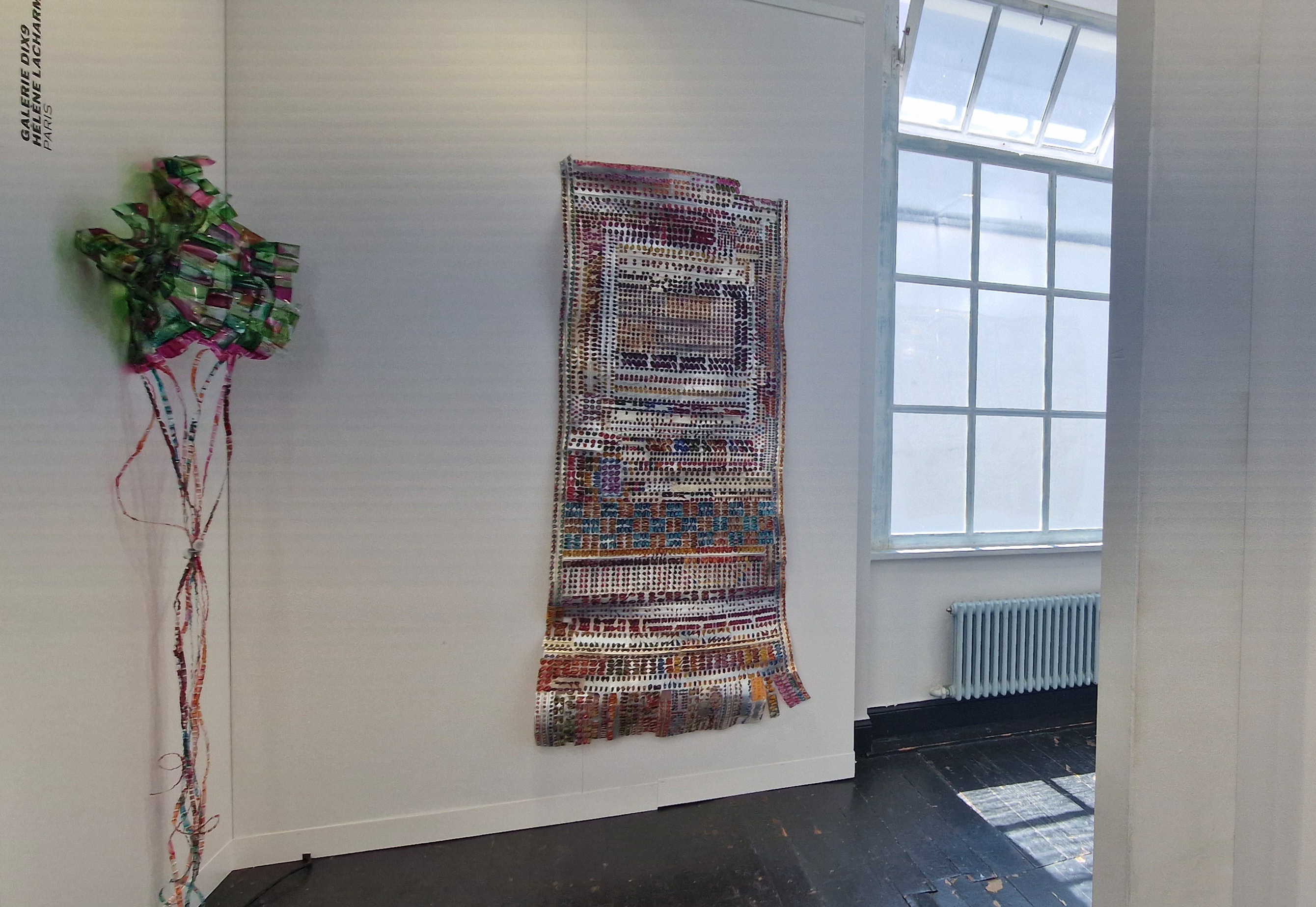
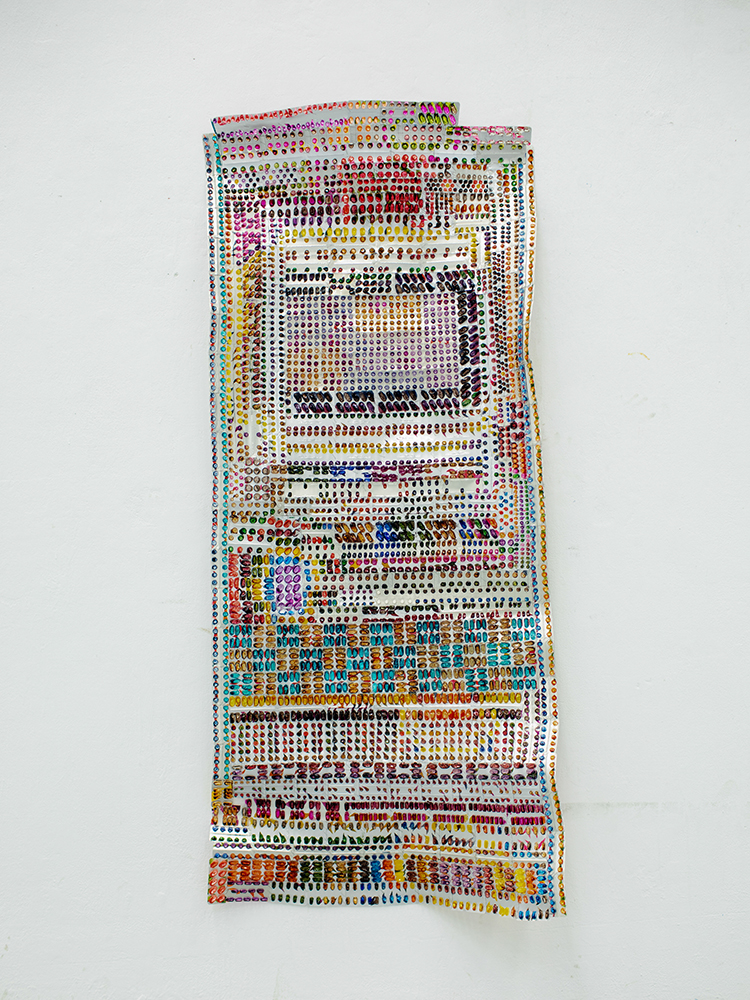
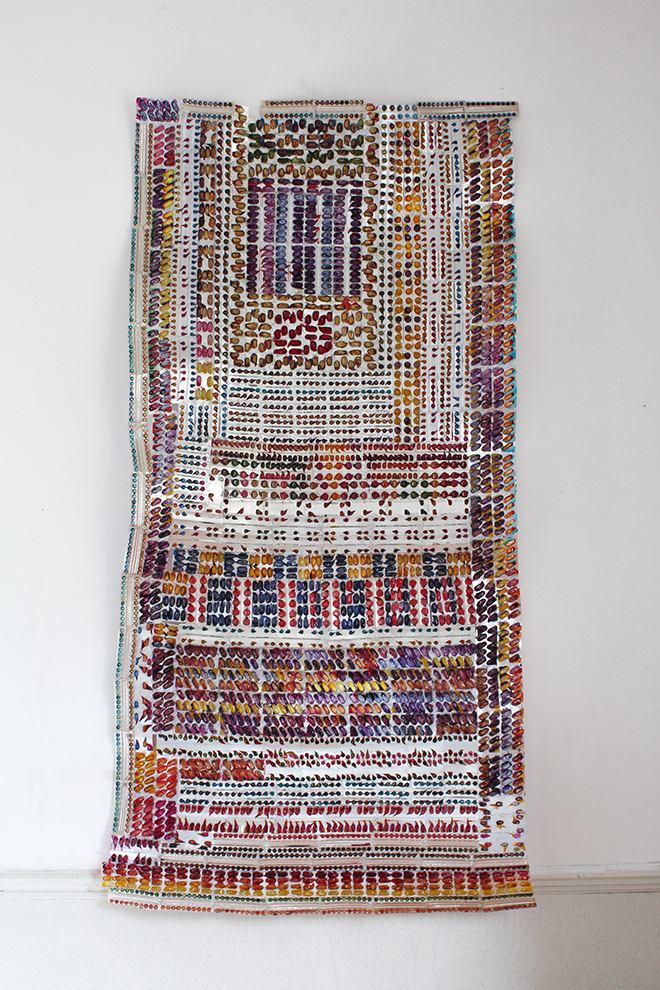
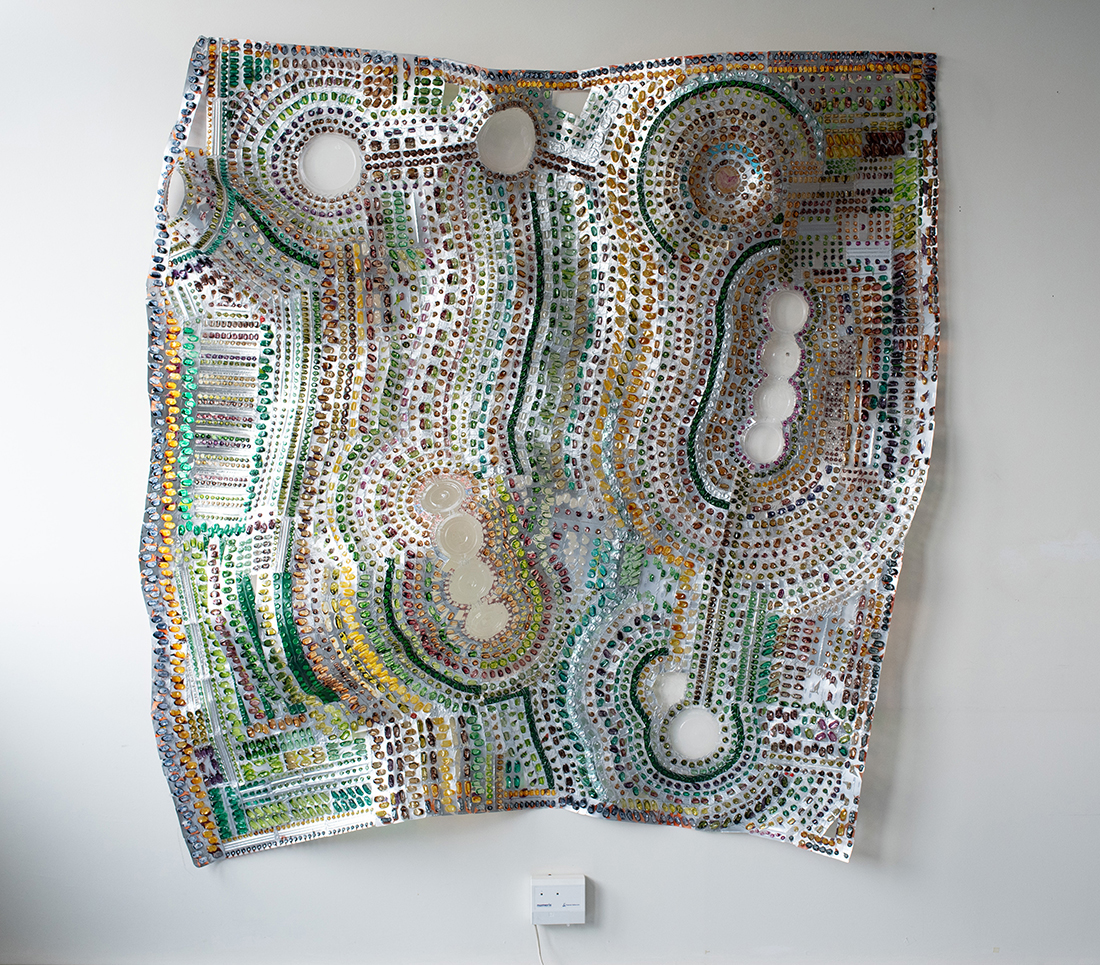
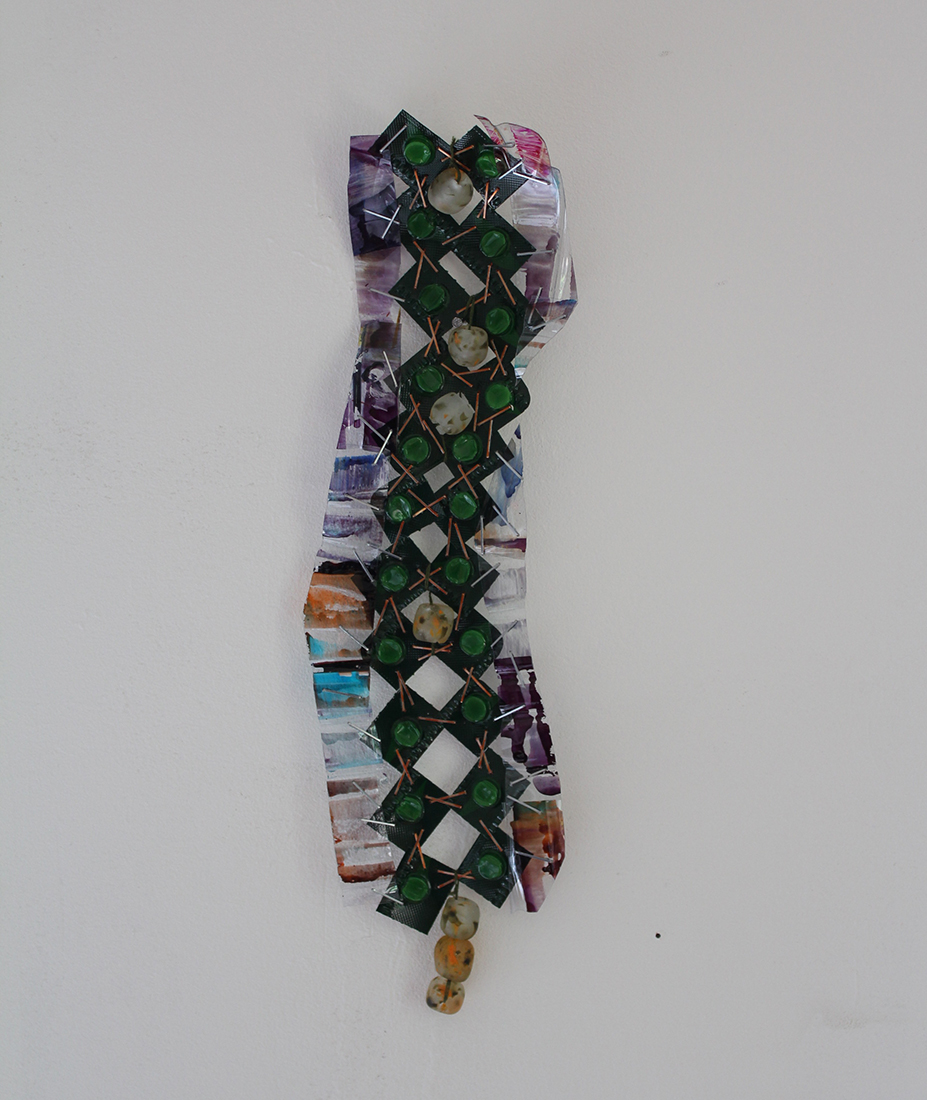
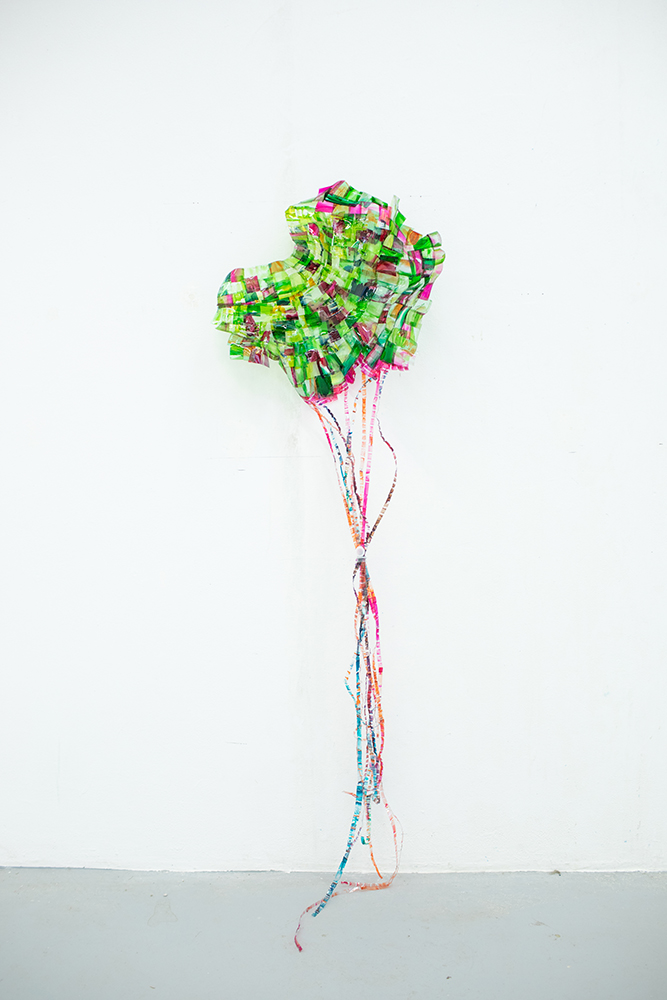
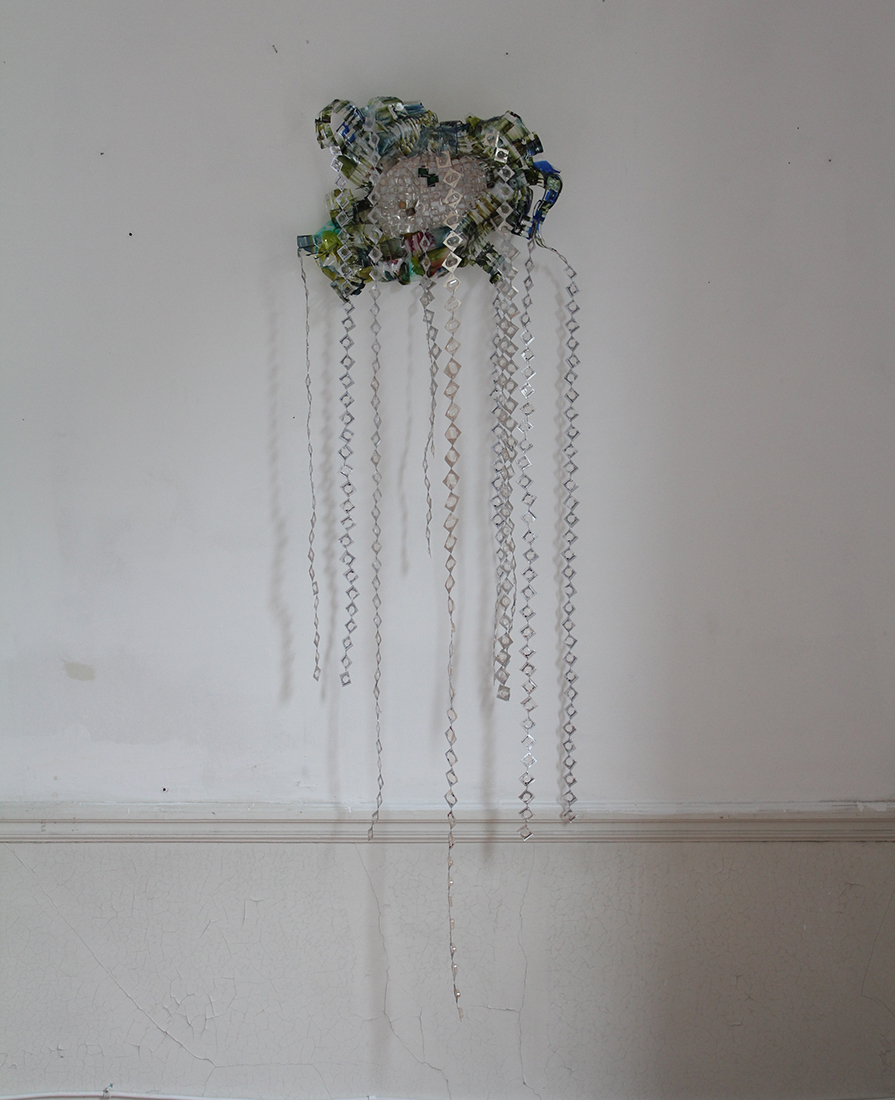
Press release
For the first edition of Africa Basel dedicated exclusively to contemporary African art and its diaspora, Galerie Dix9 is pleased to present Kwama Frigaux, a French artist of Ghanaian descent. Born in 1993, Kwama collects the wastes that are everywhere in our intimate and collect ive lives - safety glass, plastic packaging, food grade aluminum, empty medication blister packs - to turn them into sensitive objects that question us. Washed, painted and assembled, these wastes, sometimes bearing traumatic stories, are transformed into sculptures, luminescent rugs, malleable stained glass, and installat ions. The arrangement of colors, playing with the translucent or opaque parts of the materials, the work of cutting and assembling, shifts the perspective we had on this waste and reconfigures a future for it, a potential evocative of other objects, other possible uses and functions that are more reparative of the world around us.

